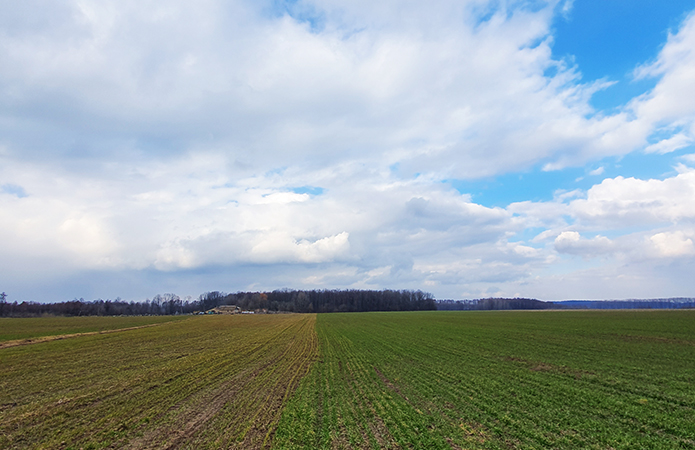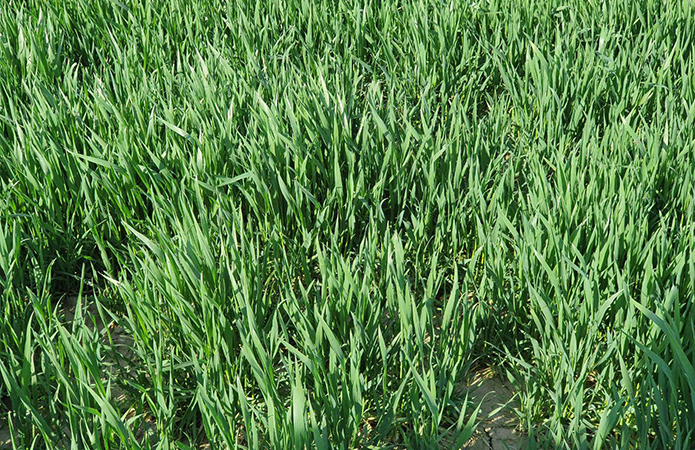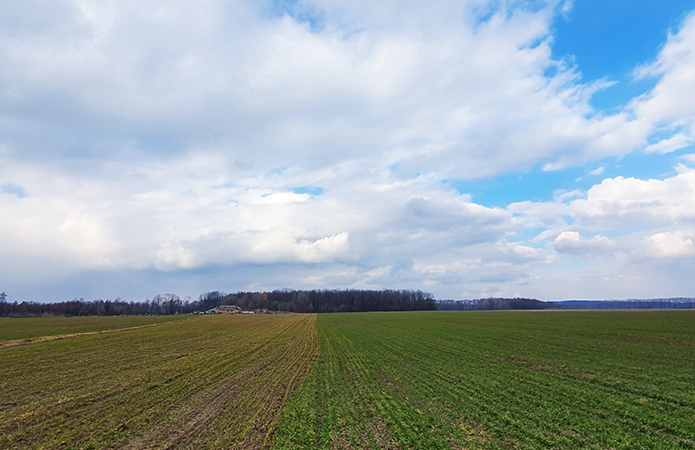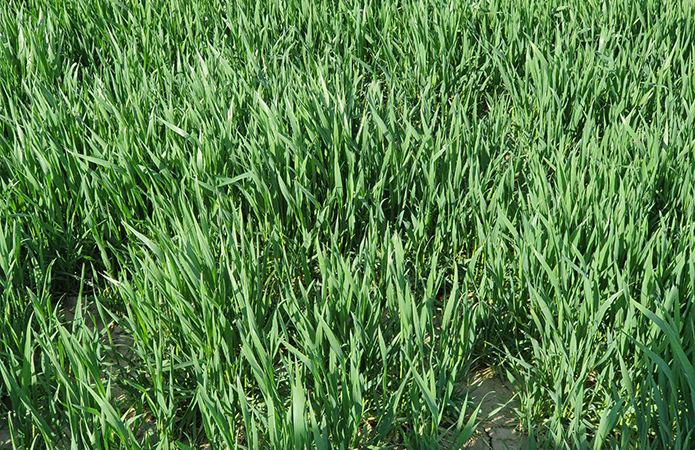Урожай-2020: закладываем старт с осени

N.B. Посевная-2019: как улучшить почву и повысить урожайность
По данным мониторинга ГУ «Институт охраны почв», для проведения комплекса осенне-полевых работ и прежде всего посева озимых культур урожая 2020 года потребность в агрохимикатах, которая задекларирована сельхозтоваропроизводителями, составляет: азотные удобрения — 1,1 млн тонн и сложные в количестве почти 900 тыс. тонн.
N.B. Shipko Agriculture — удобрения нового поколения
Как сообщил заместитель министра развития экономики, торговли и сельского хозяйства Украины Тарас Высоцкий, по состоянию на 4 октября сельскохозяйственные товаропроизводители с учетом переходящих остатков прошлого года и после завершения комплекса весенне-полевых работ обеспечены минеральными удобрениями на 97%, в том числе азотными — на 99%, что соответствует прошлогоднему уровню.
Сегодня же часть прогрессивных аграриев отходят от старых агрономических догм и используют инновационные удобрения, которые экологичнее, не истощают почву и дают новые возможности в растениеводстве.
Например, уникальность удобрений IPC, разработанных с применением фитогормонов, и их эффективность, обеспечила компании Shipko Agriculture за год рост в продажах на 40%.
Разработчики чудо-препарата нашли лазейку в экологическом правиле с использованием фитогормонов и влиянием их на растение. И если селитра вносится как удобрение, то IPC за счет влияния фитогормонов трансформирует и улучшает растение так, что оно в состоянии самостоятельно для себя добывать необходимые удобрения.
«Благодаря развитой корневой системе и симбиозу с биопрепаратом растение само вытягивает азот из воздуха и аккумулирует фосфор из почвы. Подкормленные IPC растения становятся более устойчивыми к стрессовым условиям, говоря об озимых, то это — морозы и засуха весной. Надо помнить, что озимые культуры свой будущий урожай закладывают именно в осенний период, и нужно позаботиться о том, чтобы они входили в зиму уже частично сформированными — это оказывает решающее влияние на будущий урожай. Чем раньше растение сформирует стебель, тем больше шансов на формирование сильного колоса», — рассказывает об особенностях препарата директор Shipko Agriculture Денис Тохтар.

Как отмечают в компании Shipko Agriculture: IPC — не очередное удобрение, а новый этап в развитии аграрных технологий, а сам метод удобрения направлен на эффективное и экологическое земледелие.
Производственные мощности компании позволяют за две недели выпускать удобрения с расчетом на 10 тыс. га.
Нестандартные продажи и специальное предложение
В Shipko Agriculture инновационным является не только удобрение, но и каналы продаж — свою продукцию они продвигают через соцсети, в частности Instagram. Такой подход объясняют тем, что выйти за рамки привычного и использовать в агропроизводстве уникальные препараты могут только прогрессивные и современные аграрии, а они то уж точно есть во всех соцсетях.
Как отмечают в компании, сейчас для сельхозпроизводителей, которые хотят попробовать в производстве экологическое удобрение нового поколения IPC, сформировали специальное предложение на покупку тестовой партии, рассчитанной для использования на площади 4 га, за 3999 грн.
«Это довольно выгодное предложение для аграриев и способ попробовать для себя новую технологию, которая состоит из трех компонентов: специально выведенного биопрепарата и двух фитогормонов разных классов. Это также возможность им самостоятельно удостовериться, что с данной технологией можно работать и выращивать, не используя селитры», — отмечает основатель Shipko Agriculture Владимир Шипко.
+20% к урожаю и высшая классность

Удобрение IPC проходит в два этапа. Первый поможет трансформироваться корневой системе культуры, во время которого нужно внести в почву 50% удобрений. На озимые оптимальный срок внесения — октябрь и первая декада ноября.
Второй раз удобрение вносится опрыскивателем на стадии появления у растения 3-4 листьев с ориентацией на микроэлементы, что предусматривает внесение биопрепарата, который поможет растениям самостоятельно поглощать больше азота из воздуха и фосфора из земли.
Исследования на злаковых, проведенные в трех областях, показали, что использование удобрения IPC добавляет +20% к урожайности по сравнению с традиционным способом удобрения селитрой. А при использовании препарата на протяжении 2-3 лет разница в приросте урожая будет еще ощутимее.
В результате проведенных исследований получили следующие показатели:
| Область | Культура | Повышение урожайности |
| Киевская область | Пшеница ярая | 15% |
| Пшеница озимая | 21% | |
| Житомирская область | Пшеница ярая | 17% |
| Пшеница озимая | 20% | |
| Донецкая область | Пшеница ярая | 13% |
| Пшеница озимая | 20% | |
| Черниговская область | Пшеница ярая | 18% |
| Пшеница озимая | 24% | |
| Одесская область | Пшеница ярая | 13% |
| Пшеница озимая | 19% |
Также IPC позитивно влияет на качество зерна — появляются протекторные качества и полученное зерно в 90% случаев по качеству и по показателям клейковины относится к 1 классу.
На чем экономим?
Преимущество IPC в плане экономики сразу ощутимо, начиная с показателей количества внесения, логистических и технических затрат.
«Если на 1 га расход по внесению азотных удобрений составляет 230 кг, то IPC на эту же площадь нужно всего 6 кг. То есть на 100 га нужно всего лишь 600 кг удобрений, что значительно уменьшает логистические расходы. По нашим подсчетам, сокращение логистических затрат составляет +7$/га. К тому же подкормка растений селитрой производится за 2-3 внесения, что требует трижды проезда трактора и выполнения этих операций. Кстати, удобрение можно вносить совместно с инсектицидами, фунгицидами, пестицидами, то есть оно без потери эффективности может комбинироваться с любыми средствами защиты растений, что дает сельхозпроизводителю еще один бонус — экономию затрат на внесение. Для аграриев это значительная экономия, особенно для тех, кто работает арендованной техникой. Также экономим на горючем, амортизации трактора и оплате оператору машины», — рассказывает Денис Тохтар.
Он отмечает, что используя удобрение IPC, сельхозпроизводителям можно полностью отказаться от селитры, а также на треть уменьшить использование фосфорных удобрений.
Для справки: со специалистами компании Shipko Agriculture можно связаться по телефону: +380 (97) 254 65 30.
English version of the material
Harvest 2020: laying the start in the fall
In order to facilitate the «spring start» for winter crops, one should already in the autumn take care of the appropriate supply of nutrients, because the future crop of winter crops is laid precisely during this period. October and the beginning of November are the optimal time for applying seedlings of winter fertilizers for plant nutrition.
N.B. Sowing 2019: how to improve soil and increase productivity
According to monitoring by the Institute of Soil Protection State Institution, to carry out a complex of autumn field work and, above all, plant winter crops for the 2020 harvest, the need for agrochemicals, which is declared by agricultural producers, is: nitrogen fertilizers — 1.1 million tons and complex in the amount of almost 900 thousand tons.
N.B. Shipko Agriculture — next-generation fertilizers
According to the Deputy Minister of Economic Development, Trade and Agriculture of Ukraine Taras Vysotsky, as of October 4, agricultural producers, taking into account the carry-over of last year and after completion of the spring field work, were provided with 97% mineral fertilizers, including 99% with nitrogen fertilizers %, which corresponds to last year's level.
Today, some of the progressive farmers are moving away from old agronomical dogmas and using innovative fertilizers that are more environmentally friendly, do not deplete the soil and provide new opportunities in crop production.
For example, the uniqueness of IPC fertilizers developed using phytohormones and their effectiveness ensured Shipko Agriculture's annual sales growth of 40%.
The developers of the miracle drug found a loophole in the environmental rule using phytohormones and their effect on the plant. And if nitrate is introduced as fertilizer, then IPC, due to the influence of phytohormones, transforms and improves the plant so that it is able to independently produce the necessary fertilizers for itself.
«Thanks to the developed root system and symbiosis with the biological product, the plant itself draws nitrogen from the air and accumulates phosphorus from the soil. Fed IPC plants become more resistant to stressful conditions, speaking of winter crops, these are frosts and droughts in spring. It must be remembered that winter crops lay their future crops precisely in the autumn period, and care must be taken that they enter the winter already partially formed — this has a decisive influence on the future crop. The sooner the plant forms the stem, the greater the chance of forming a strong spike», — says Denis Tokhtar, Director of Shipko Agriculture, about the characteristics of the drug.

According to Shipko Agriculture, IPC is not just another fertilizer, but a new stage in the development of agricultural technologies, and the fertilizer method itself is aimed at efficient and ecological farming.
The production facilities of the company allow for two weeks to produce fertilizers with the expectation of 10 thousand hectares.
Custom sales and special offer
In Shipko Agriculture, not only fertilizer is innovative, but also sales channels — they promote their products through social networks, in particular Instagram. This approach is explained by the fact that only progressive and modern farmers can go beyond the usual and use unique drugs in agricultural production, and they certainly are in all social networks.
According to the company, now for farmers who want to try the next-generation environmental fertilizer IPC in production, they have formed a special offer for the purchase of a test batch, designed for use on an area of 4 hectares, for 3999 UAH.
«This is a rather advantageous offer for farmers and a way to try for themselves a new technology, which consists of three components: a specially derived biological product and two phytohormones of different classes. It is also an opportunity for them to make sure that they can work and grow this technology without using saltpeter», — says Shipko founder Vladimir Shipko.
+ 20% yield and top class

IPC approval takes place in two stages. The first will help transform the root system of culture, during which 50% of the fertilizer must be applied to the soil. For winter, the optimal application period is October and the first decade of November.
The second time the fertilizer is applied by the sprayer at the stage of the appearance of 3-4 leaves in the plant with a focus on trace elements, which involves the introduction of a biological product that will help the plants independently absorb more nitrogen from the air and phosphorus from the ground.
Studies on cereals conducted in three areas showed that the use of IPC fertilizer adds + 20% to productivity compared to the traditional method of fertilizing with nitrate. And when using the drug for 2-3 years, the difference in yield growth will be even more noticeable.
As a result of the studies received the following indicators:
| Region | Crop | Yield increase |
| Kiev region | Spring wheat | 15% |
| Winter wheat | 21% | |
| Zhytomyr region | Spring wheat | 17% |
| Winter wheat | 20% | |
| Donetsk region | Spring wheat | 13% |
| Winter wheat | 20% | |
| Chernihiv region | Spring wheat | 18% |
| Winter wheat | 24% | |
| Odessa region | Spring wheat | 13% |
| Winter wheat | 19% |
Also, IPC positively affects the quality of grain — protective qualities appear and the obtained grain in 90% of cases is of the 1st class in terms of quality and gluten.
What are we saving on?
The economics advantage of IPC is immediately tangible, starting with application rates, logistic and technical costs.
«If the consumption for nitrogen fertilizers application per 1 ha is 230 kg, then IPC for the same area needs only 6 kg. That is, only 600 kg of fertilizers are needed per 100 ha, which significantly reduces logistics costs. According to our estimates, the reduction in logistics costs is + $ 7 / ha. In addition, fertilizing plants with nitrate is carried out for 2-3 applications, which requires three times the tractor to travel and perform these operations. By the way, fertilizer can be applied together with insecticides, fungicides, pesticides, that is, it can be combined with any plant protection products without loss of effectiveness, which gives the farmer another bonus — saving on the cost of applying. For farmers, this is a significant savings, especially for those who work with rented equipment. We also save on fuel, tractor amortization and payment to the machine operator», — says Denis Tokhtar.
He notes that using IPC fertilizer, agricultural producers can completely abandon nitrate, as well as reduce the use of phosphorus fertilizers by a third.
For information: Shipko Agriculture specialists can be contacted by phone +380 (97) 254 65 30.
Ludmila Lebed, AgroPortal.ua
